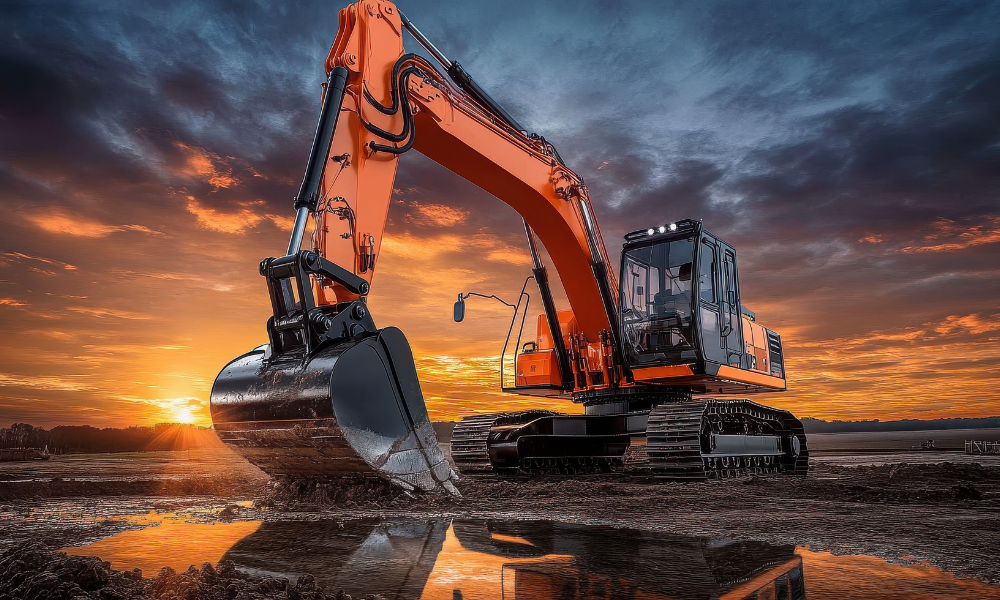Biological safety cabinets are essential when working on and handling dangerous materials. Here’s what you should know to get the best for your staff

- The best biological safety cabinets to put on your safety equipment list
- What is a biological safety cabinet?
- How do biological safety cabinets work?
- What is a biological safety cabinet used for?
- What is the difference between a biological safety cabinet and a hood?
- What is the most important part of a biological safety cabinet?
- What are the differences between a Class I BSC and a Class II BSC?
If you work in a company or industry that typically handles hazardous biological materials, biological safety cabinets are an essential part of your personal safety equipment list. These products are the most common and effective biocontainment mechanisms designed to protect workers from aerosols or splashes of these hazardous materials.
In this article, Canadian Occupational Safety lists the best biological safety cabinets for your business. We'll highlight each product's features and benefits to help you make an informed choice. Read on and find out which of our featured products provides the best protection.
The best biological safety cabinets to put on your safety equipment list
If your company routinely handles infectious biological material or volatile chemicals, you can be inundated by the many choices of biological safety cabinets. Here are some viable biological safety cabinets to consider:

1. Purair BIO biological safety cabinet
This is a biosafety cabinet that has gone through NSF/ANSI Standard 49 and EN12469 testing and certification. The Purair BIO is a versatile piece of laboratory equipment, as it is suited for working with biosafety agents at levels 1, 2, 3 and 4.
The main benefit offered by the Air Science biological safety cabinet is its single EC blower motor for ease of use, reliability and low cost. Airflow adjustments are simpler, operational costs lower and maintenance easier for units equipped with single EC blower motors, as claimed by its manufacturer, Air Science.
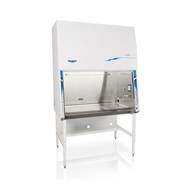
2. Labconco Logic Class II Type A2 Biosafety Cabinet
This biosafety cabinet provides comprehensive protection for people, products, and the environment against hazardous particulates, including agents requiring BSL 1-4 containment. The Labconco Logic Class II is ideal for applications involving antineoplastic drugs, genetic material and other hazardous airborne particulates. All models ensure the highest standard of safety and performance and are NSF-Listed.
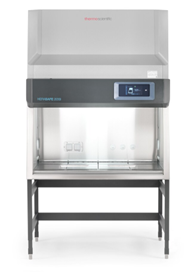
3. Thermo Fisher Herasafe 2030i Class II A2 Biosafety Cabinet
The Thermo Fisher Herasafe 2030i Class II A2 biosafety cabinet stands out for its spacious design and user-friendly touchscreen interface, making it intuitive for laboratory personnel. With high filtering efficiency and an energy-saving mode, the Herasafe ensures optimal performance during sensitive operations like cell culture while protecting users and samples from contamination. This model also features integrated UV lighting for additional decontamination and more safety in the lab environment.
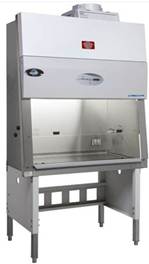
4. NuAire Class II, Type A2 Biosafety Cabinet (Model NU-543)
The NuAire NU-543 is an excellent choice for labs that require stringent safety measures. This cabinet is designed for various applications, but most notably sterile hazardous drug compounding and tissue culture in microbiological laboratories.
This configuration comprises a reliable containment system, with a dual thermistor airflow sensor that continuously calculates and shows inflow and downflow velocities in real time. The NuAire NU-543 can ensure optimal containment without compromising safety during use. Notably, this model complies with both the NSF/ANSI 49 and EN12469 standards, making it a biological safety cabinet that meets international safety regulations.

5. Esco Airstream G4 Class II Type 2 BSC
This Biological Safety Cabinet from Esco Airstream is a solid option for laboratories that demand high-level biosafety measures. The G4 model is precisely engineered to provide total exhaust, to ensure that all filtered air is expelled from the laboratory workspace. This is suitable for working with pathogens or toxic chemicals.
It also comes with a dimmable LED lighting system and a touchscreen user interface for easy operation. Its ergonomic design cuts down on user fatigue, which makes working in hazardous environments a more comfortable experience.
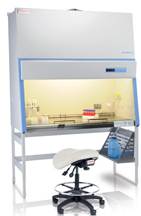
6. Thermo Scientific 1300 Series Class II, Type A2
This range of biological safety cabinets from Thermo Scientific encapsulates both value and performance. The Thermo Scientific 1300 series is designed mainly for handling pathogenic biological samples and provides a highly safe and sterile work zone.
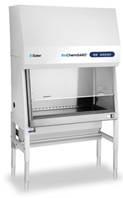
7. Baker Company BioChemGARD e3 Class II Type B2
This Biological Safety Cabinet is an example of advanced engineering for high-containment applications, specifically those that involve hazardous particulates, mists and vapours. The BioChemGARD e3 is a class II type B2 cabinet that provides a high level of protection for both its users and the environment, thanks to its total exhaust system that removes contaminated air.
Laboratory workers and owners will appreciate the high level of safety this biological safety cabinet provides, especially when handling chemical agents and cytotoxic drugs. The BioChemGARD e3 also has an energy-efficient motor that cuts down on power consumption while providing optimal airflow.

8. Metisafe Class II Type A Biological Safety Cabinet
The Class II Type A biological safety cabinet from Metisafe is effective in maintaining the integrity of laboratory environments. It can generate a HEPA-filtered downflow to create a sterile work zone and prevent cross-contamination of samples. Its HEPA filtered exhaust system can discharge air to a facility exhaust system, protecting the environment as well as the products handled. These features make it ideal for handling pathogenic biological samples.
The Metisafe Class II safety cabinet also features a front access opening with an inward airflow to ensure that no mists or particulates can get to the laboratory workers. Its HEPA-filtered downflow effectively provides an ISO Class 3 work surface, further protecting its users.
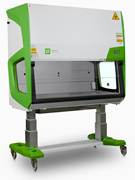
9. Tecniplast ARIA TECH60
This is a dual-configuration microbiological safety cabinet that provides protection for laboratory staff and animals. The ARIA TECH60 works as both a Class II biohazard safety cabinet, as well as a station for changing cages for laboratory animals.
This model is specifically meant for use in animal research laboratories and offers effective barriers that prevent cross-contamination and allergen exposure. Certified by TUV-Nord, this biological safety cabinet meets the EN 12469:2000 regulation. The ARIA TECH60 features a laminar flow pass box with an ISO 3 classification and a bio-safe changing station for mouse or rat cage changing.
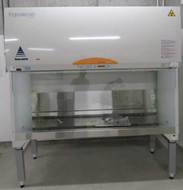
10. Kojair BioWizard Golden GL-200 Ergosience
This cabinet from Kojair is specifically made to meet the stringent safety standards of laboratories that handle dangerous biological agents. The Kojair BioWizard Golden GL-200 features an airflow system that maintains a constant flow of sterile air, giving reliable, consistent protection against contaminants.
Its ergonomics prioritize user comfort, and its electronically controlled sliding front panel enables easy access while ensuring a completely airtight seal when closed. This is also one of the few safety cabinets that feature silent operation, eliminating any noise disturbance whenever lab technicians perform delicate procedures and need to focus. Its design also provides great energy efficiency. The product uses advanced technology to optimize airflow without needing or using excessive amounts of power.
When choosing a biosafety cabinet for your organization, choose only those that meet rigorous safety standards and provide effective protection in laboratory settings. After all, biological safety cabinets are meant to ensure personnel and environmental safety while maintaining sample integrity. For other PPEs and other safety equipment, feel free to browse our product pages.
What is a biological safety cabinet?
A biological safety cabinet is a specialized enclosed and ventilated laboratory workspace designed to protect personnel, the environment, and products from exposure to biohazardous materials. These materials are typically organic in nature (e.g. human bodily fluids) that may be contaminated with pathogens and infectious agents.
Working with these materials requires compliance with strict biosafety guidelines and levels, hence the importance of biological safety cabinets. The products have two primary purposes:
- To serve as an engineering control that lessens or eliminates the risk of hazardous exposure
- To ensure that essential laboratory work can be conducted safely
Key features of biological safety cabinets
When choosing a biological safety cabinet, make sure to check its important safety features meet industry standards and best practices. Here are the features to look for:
1. Air filtration capabilities
Check that the unit you’re considering has HEPA filters that purify inflowing and exhaust air. These filters are a definite requirement, as these significantly reduce the risk of infectious agents being transmitted as aerosols or particulates.
Safety cabinets utilize HEPA filters that purify both the inflow and exhaust air, significantly reducing the risk of transmitting aerosols or particulates that may carry infectious agents. Make sure that the HEPA filters are of the appropriate rating for your company’s needs and can trap the tiniest particulates.
2. Cabinet classes
There are three standard cabinet types or classes in terms of safety ratings:
- Class I: Provides personnel and environmental protection but does not protect the materials inside the cabinet.
- Class II: Offers personnel, environmental, and product protection, with several subtypes (e.g., A1, A2, B1, B2) for specific applications. You can refer to the descriptions of Class II subtypes below.
- Class III: This is a fully-enclosed, gas-tight cabinet, providing the highest level of protection for both users and materials against biohazards.
Safety class subtypes:
1. Class II Type A1 biological safety cabinet
- Design: Type A1 BSCs maintain a minimum inflow velocity of 75 feet per minute and recirculate 70% of the air while exhausting 30% outdoors after filtration.
- Protection levels: Type A1 BSCs offer personnel and environmental protection but do not protect the product contained within the cabinet.
- Applications: Often used for standard microbiological work with no chemical evaporation. However, they are not suitable for handling volatile or toxic chemicals.
2. Class II Type A2 biological safety cabinet
- Design: This is like the Type A1 but with an increased inflow velocity of 100 feet per minute. BSCs of this class can handle minute amounts of volatile chemicals if vented with an appropriate canopy connection to the facility’s HVAC system.
- Protection levels: Offers personnel, product, and environmental protection. The HEPA-filtered downflow air creates an ISO 5 environment within the work area.
- Applications: Type A2 BSCs are widely used in pharmaceutical compounding and biotechnology settings. They are the most common type of BSC used today.
3. Class II Type B1 biological safety cabinet
- Design: B1 cabinets maintain a minimum average inflow velocity of 100 feet per minute and are integrated into a building exhaust system. BSCs of this type recirculate a portion of the inflow air while exhausting the contaminated downflow air through a dedicated duct.
- Protection levels: Provides personnel, product, and environmental protection, with a focus on capturing hazardous vapours before they can seep into the laboratory environment.
- Applications: Class B1 biological safety cabinets are suitable for work involving small amounts of volatile chemicals and trace amounts of radionuclides. Using this type of BSC requires highly trained personnel due to its operational complexities.
4. Class II Type B2 biological safety cabinet
- Design: Type B2 cabinets maintain a minimum inflow velocity of 100 feet per minute and require a dedicated exhaust system. All air (both inflow and downflow) is filtered through HEPA filters and exhausted completely outside the building.
- Protection: B2 cabinets offer the highest level of protection, as no contaminated air is recirculated, ensuring a safe environment for both personnel and products.
- Applications: These BSCs are ideal for handling significant quantities of volatile chemicals and radionuclides. They are sometimes referred to as "total exhaust" cabinets due to their requirement to exhaust 100% of air.
For a more comprehensive list of features to look for the appropriate biological safety cabinet, you can refer to the Canadian Biosafety Handbook. To enhance safety in your worksite and within the area of your biosafety cabinets, refer to OSHA guidelines.
As additional safety measures, you may have to install eyewash stations close to your cabinets – choose from the best eyewash stations you can get in Canada. It's important also to know how to properly dispose of the hazardous waste at the end of the day.
How do biological safety cabinets work?
Biological safety or biosafety cabinets work by having two HEPA filters control the flow of air into a sealed environment enclosed within a “cabinet.” The two filters are:
- supply filter: filters the air entering onto the work surface
- exhaust filter: filters the air that leaves the cabinet, ensuring that the workers and environment are shielded from any harmful particles or aerosols
Biological safety cabinets airflow dynamics
Biological safety cabinets work by maintaining negative pressure and a controlled airflow to prevent the escape of harmful aerosols. Here’s the process of how these units operate and handle air to contain hazardous materials:
- Inflow of air: When switched on, the cabinet draws air in from the laboratory through a front opening. This inflowing air is pulled in at a specified velocity to create a protective barrier, preventing contaminants from entering the cabinet.
- Downflow of air: Once inside, a portion of the intake air is filtered through a HEPA filter to trap and remove airborne particles, including bacteria and viruses. The filtered air is then directed downwards in a laminar flow over the work surface, creating a sterile environment.
- Exhausting of air: Air that flows out of the cabinet is once again coursed through another set of HEPA filters before being released into the environment, thus ensuring that no contaminants escape.
What is a biological safety cabinet used for?
A biological safety cabinet is a primary engineering control used to protect lab workers or any staff working on biohazardous or infectious agents. These products also help maintain quality control of the material being worked with as it filters both the inflow and exhaust air. The units are sometimes called a laminar flow or tissue culture hood.
Here’s a useful guide from the US CDC on how to use a biological safety cabinet:
What is the difference between a biological safety cabinet and a hood?
A biosafety cabinet protects the user, the environment, and the material. Meanwhile, a hood, like a chemical fume hood, only protects the hood’s user.
In addition, biosafety cabinets have HEPA filters while chemical fume hoods do not. The HEPA filter in the exhaust system of a biosafety cabinet will effectively trap all known infectious agents and ensure that only microbe-free exhaust air is discharged from the cabinet (i.e., 99.97% of particles 0.3 µm in diameter and 99.99% of particles of greater or smaller size).
Notable differences between biosafety cabinets vs chemical fume hoods
|
Biosafety cabinet |
Chemical fume hood |
|
Used for infectious biological agents |
Used in handling hazardous chemicals |
|
Protects users, the environment, and materials |
Protects its user |
|
HEPA filter is required |
No HEPA filter |
|
Expels or exhausts air outside the building |
Does not exhaust air (unless decontaminated) |
What is the most important part of a biological safety cabinet?
The most important components of a BSC are its filters. There are two kinds of filters that a biological safety cabinet might have, either:
- High-Efficiency Particulate Air (HEPA) filter that is 99.99% efficient at Most Penetrating Particle Size (or MPPS; typically, at 0.30 microns).
- Ultra-Low Particulate Air (ULPA) filter that is 99.999% efficient at MPPS, which is typically at 0.12 microns.
Since the ULPA filter is 10 times more efficient than the HEPA filter, a biosafety cabinet with an ULPA filter can provide better user, product, and environmental protection.
What are the differences between a Class I BSC and a Class II BSC?
Class I biological safety cabinets provide personnel and environmental protection but do not protect the samples within the cabinet. They feature an open front that draws air inward at a minimum speed of 75 feet per minute. This creates a barrier that keeps contaminated air from escaping into the lab.
Meanwhile, Class II BSCs offer protection for personnel, samples, and the environment. They maintain a partially open front that generates laminar airflow directed downward over the work area, thereby creating a sterile environment. Class II cabinets are available in other subtypes (A1, A2, B1, and B2), each suited for different applications and handling requirements, including the use of volatile chemicals.
Whichever type of biosafety cabinet you choose, remember to procure the right PPEs for your staff as well, since these are necessary for using biological safety cabinets.
What biological safety cabinets will you consider for your organization? Let us know in the comments



